The IDF's withdrawal from Khan Younis appears to be aimed at paving the way for ceasefire negotiations with Hamas, but it could also be a "diversion" by Israel.
The Israel Defense Forces (IDF) announced on April 7 that it had withdrawn the 98th Commando Division from the city of Khan Younis, a stronghold of the Hamas armed group in the southern Gaza Strip, after "completing its mission" there.
The 98th Division is the most powerful force of the Israeli army, which had been reinforced with manpower and equipment to launch a large-scale attack on Khan Younis in early December 2023. After many fierce bombardments, Israeli tanks began to enter the center of Khan Younis from mid-December 2023.
Israeli strategists have said that the IDF’s ground campaign in Gaza will last at least a year and be divided into several phases. Accordingly, the IDF will initially deploy large, division-sized units to fight in hot spots there, then switch to using compact, highly mobile units to carry out smaller-scale missions.
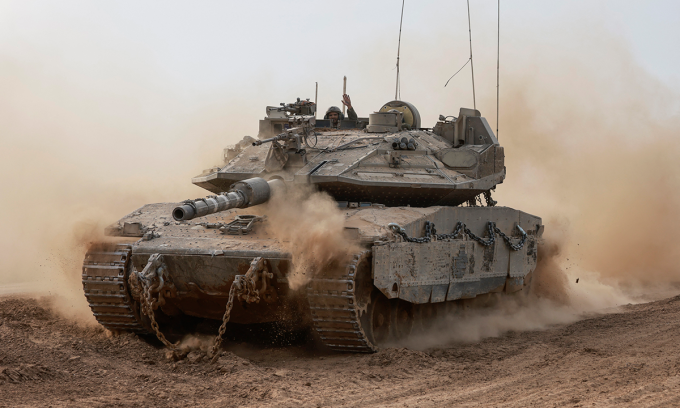
Israeli tanks near the Gaza Strip border on February 26. Photo: AFP
But exactly six months after the war broke out, with the decision to withdraw from Khan Younis, Israel now maintains only a brigade-sized task force in Gaza, with the main task of protecting the Netzarim Corridor. This is a route that stretches from the settlement of Be'eri in southern Israel to the Mediterranean coast, running across central Gaza, dividing the strip of land in two.
The size of Israel's combat forces has been significantly reduced while they have not yet achieved their stated goal, which is to "completely eliminate Hamas".
Anshel Pfeffer, a commentator for Hareetz , said the IDF's withdrawal from Khan Younis after four months of operations sends a special signal about the ceasefire negotiations, as well as the future of the hostages being held by Hamas.
Hamas has repeatedly said it will only release the hostages if the Israeli army withdraws completely from the Gaza Strip. Sky News analyst Alistair Bunkall said the IDF's move was a "compromise" to promote a long-stalled ceasefire with Hamas.
It is no coincidence that the Israeli army announced its withdrawal at the same time that high-level negotiations with the armed group were expected to resume, according to this expert.
Jerusalem Post columnist Yonah Bob echoed the sentiment, saying the Israeli military has long believed that applying pressure on Khan Younis, an area of psychological and military importance to Hamas, is the “only way” to force the militant group to yield and agree to release the hostages.
The withdrawal from Khan Younis suggests the IDF has admitted that this strategy has failed. "Israel will need to come up with a new strategy or make greater concessions to Hamas to allow more hostages to return, including opening the northern side of the strip," Bob wrote.
Pfeffer also said Israel could soon reach a prisoner exchange deal with Hamas after the IDF withdrew all troops from the group's stronghold in southern Gaza.
Another issue that has emerged after the Israeli military's move is the plan to attack the city of Rafah in the southernmost Gaza. Prime Minister Benjamin Netanyahu has repeatedly affirmed that he will continue to send troops into Rafah, where about 1.5 million Palestinians are taking refuge, to "eradicate the roots" of Hamas, despite opposition from the international community.
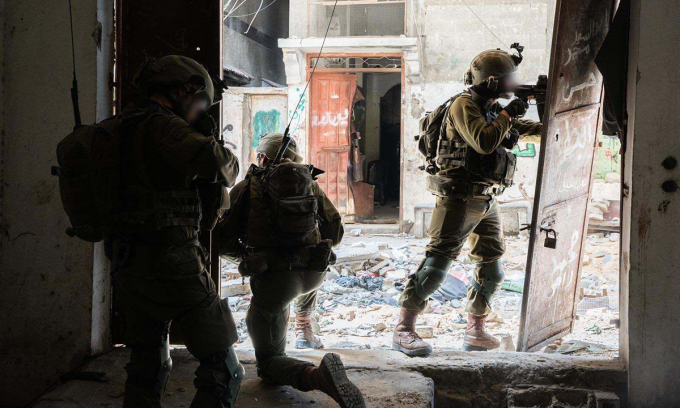
Israeli soldiers in the Gaza Strip in this photo posted on April 7. Photo: IDF
But in a meeting with the Israeli cabinet on the morning of April 7, Mr. Netanyahu only briefly mentioned the Rafah issue. Instead, the Israeli Prime Minister focused on the urgent need to return the hostages, a topic to which he had previously paid less attention.
Along with the IDF's withdrawal from Khan Younis, Pfeffer said this was a sign that Mr. Nentayahu may have changed his mind about sending troops into the city of Rafah, to focus on efforts to rescue hostages and restore his reputation in the eyes of Israeli public opinion.
People in this country have recently been protesting continuously, demanding that his government do more to bring the hostages back.
"If Hamas and Israel reach a ceasefire agreement, the Rafah offensive will be delayed until the agreement is concluded. Even if the two sides cannot find common ground, the offensive will almost certainly not happen in the near future," Pfeffer said.
Bunkall also said that the IDF's withdrawal from Khan Younis means that the Israeli army will find it difficult to launch a large-scale ground operation against Rafah, "at least in the short term."
Expert Bob commented that in case the negotiations with Hamas collapse, the IDF would still benefit from withdrawing from Khan Younis, because they could open the door to attack Rafah more conveniently, thereby pushing Hamas into a dead end and eventually forcing them to accept a deal more favorable to Israel.
According to him, the absence of Israeli soldiers in Khan Younis will create conditions for hundreds of thousands of refugees in Rafah to return, without Israel having to launch an evacuation campaign through the humanitarian corridor.
This could help Israel gain important support from the US. Washington previously announced that it would only support Tel Aviv's attack on Rafah if it could come up with a feasible plan to evacuate more than a million refugees, something the US fears Israel will find difficult to do.
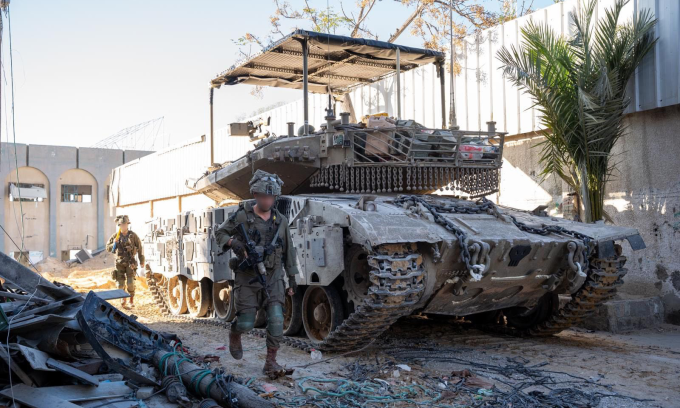
Israeli forces in the Gaza Strip in this photo posted on February 27. Photo: IDF
The withdrawal from Khan Younis could also be a "diversion" tactic by the IDF, pretending to retreat so that Hamas can regroup its scattered forces in one place, then launch a one-off attack like it did with Al-Shifa hospital.
The Israeli military invaded Gaza’s largest hospital in November 2023, accusing Hamas of establishing a command center there. The IDF then withdrew, then launched a surprise raid on the hospital on March 18, claiming to have received intelligence that the armed group had regrouped at the facility.
The Israeli military announced the end of the operation on April 1, saying it had killed more than 200 Hamas and Palestinian Islamic Jihad (PIJ) gunmen gathered at the hospital. Hamas and PIJ denied this information, saying that those killed at the hospital were mainly civilian refugees and medical staff.
Israeli Defense Minister Yoav Gallant also announced on April 7 that the IDF's purpose in withdrawing from southern Gaza was to prepare for an attack on Rafah. "We will make it so that Hamas no longer controls the strip and cannot continue to act as a military force capable of endangering Israeli citizens," he emphasized.
White House National Security Council spokesman John Kirby said on the same day that the IDF's move was to help its soldiers rest and re-equip themselves after four months of exhausting combat, before entering a new campaign.
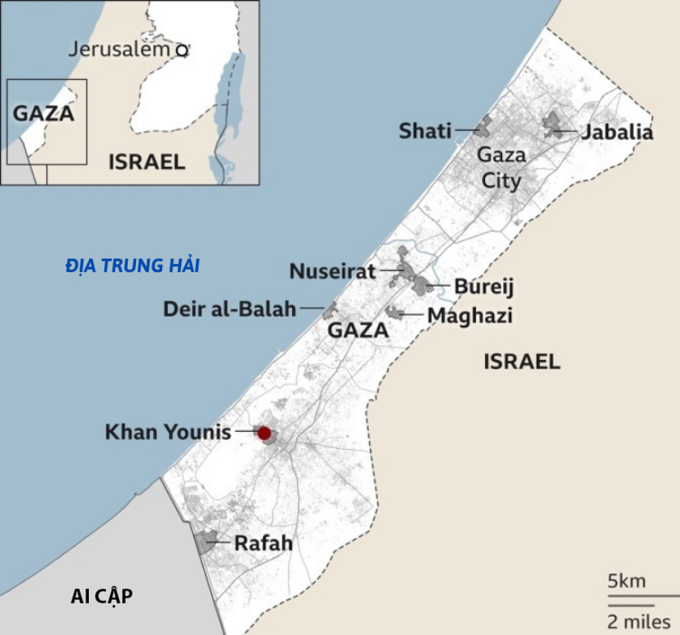
Location of cities in the Gaza Strip. Graphics: BBC
Pham Giang (According to Hareetz, ToI, Sky News, Jerusalem Post)
Source link














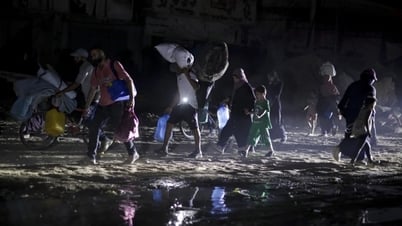

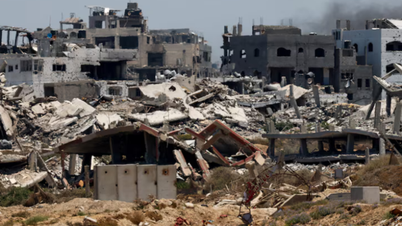





























































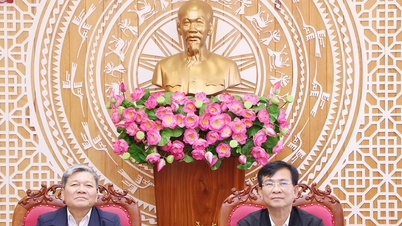






















Comment (0)